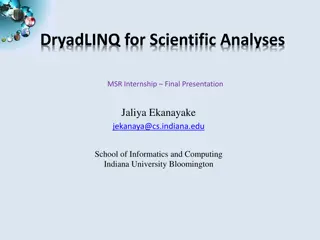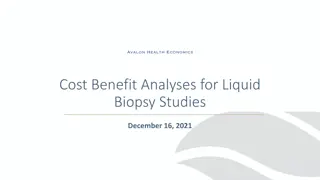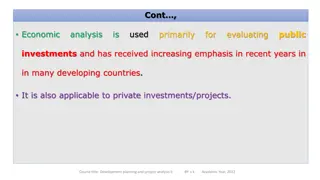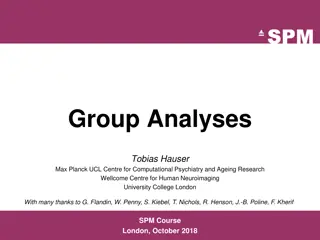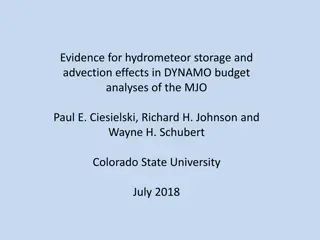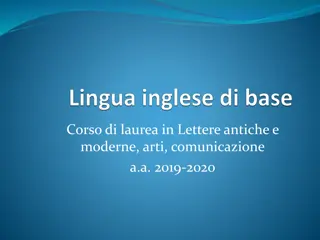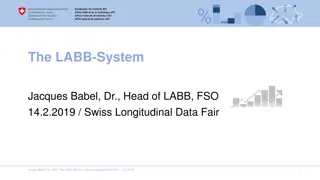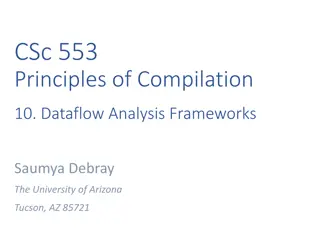Narratology: Key Concepts and Analyses
Exploring the study of narratives, this content delves into narratology's fundamental mechanisms and procedures in storytelling. It differentiates story, plot, and discourse while examining the roles of characters and actions in narrative development, referencing scholars like Aristotle, Propp, and Genette. The narrative structure and functions proposed by Propp are analyzed, highlighting essential story elements like the villain, donor, hero, and more, emphasizing the significance of how a story is presented.
Download Presentation

Please find below an Image/Link to download the presentation.
The content on the website is provided AS IS for your information and personal use only. It may not be sold, licensed, or shared on other websites without obtaining consent from the author.If you encounter any issues during the download, it is possible that the publisher has removed the file from their server.
You are allowed to download the files provided on this website for personal or commercial use, subject to the condition that they are used lawfully. All files are the property of their respective owners.
The content on the website is provided AS IS for your information and personal use only. It may not be sold, licensed, or shared on other websites without obtaining consent from the author.
E N D
Presentation Transcript
The study of how narratives (stories) make meaning, and what the basic mechanisms and procedures are which are common to all acts of story-telling. Narratology individual stories, but the attempt to study the nature of story itself,as a concept and as a cultural practice. the reading & interpretation of
Story/fabula/histoire The actual sequence as they happen; the story has to begin at the beginning, then move chronologically without nothing left out. Plot/sjuzhet (pronounced soojay )/discourse/recit A version of the story that can begin in the middle of a chain of events, and that can also provide us with flash back and flash forward.
Aristotle (Aristotelian analysis) Vladimir Propp (Proppian analysis) Gerard Genette (Genettian analysis)
Character and action are essential in a story. They must be revealed through elements of plot. Three key elements in plot: The hamartia sin, flaw that induces tragic flaw in tragedy The anagnorisis recognition or realization appear when the truth of the situation is recognized by the protagonist = a moment of self-recognition The peripeteia reversal of fortune or a turn-round
Proposes a 31- function that some of them may construct or form a tale. Not a single tale/story has all functions. Yet, the order of the function is fixed because events tend to have a due order. This method basically wants to show that beside its multiformity lies a uniformity . From 31-function, Propp classifies them into seven spheres of action as roles, not the characters.
The villain The donor (provider) The helper The princess (a sought-for-person) and her father The dispatcher The hero (seeker or victim) The false hero 1. 2. 3. 4. 5. 6. 7.
Gives weight more on how the story is told. Proposes 6 areas: Is the diegetic? Mimetic dramatizing / showing , with direct speech and dialogue slow telling Diegetic panoramic / summarizing ,without trying to show it as it happens before our eyes rapid telling basic narrative mode mimetic or 1.
How is the narrative focalized? Point of view: External focalization from outside, what the characters say and do. e.g. Thelma stood up and called out to Mario. Internal focalization from inside, focus on what the characters feel & think e.g. Thelma suddenly felt anxious that Mario was not going to see her and would walk by oblivious on the other side of the road. Zero focalization omniscient narration 2. focus on
Who is telling the story? Covert/effaced/non-intrusive/non- dramatized/authorial persona Not identified at all as a distinct character with name or personal history, remains as a voice or tone zerofocalized. Overt/dramatized/intrusive Heterodiegetic one distinct character telling others. Homodiegetic one himself/herself. 3. distinct character telling
How is time handled in the story? Flash back = analeptic Flash forward = proleptic Analeptic & proleptic rarely begin in the beginning, usually in the middle (in medias res, a theory of the classical times) 4.
Single- ended How is the story packaged? 5. Double- ended Frame/primary/ narrative Embedded/secondary /meta/main narrative Intrusive
How are speech and thought represented? Direct & tagged What s your name ? Mario asked her. It s Thelma , she replied. Direct & untagged What s your name ? Thelma . Direct & selectively tagged What s your name ? asked Mario. Thelma . 6.
Tagged indirect speech He asked her what her name was, and she told him it was Thelma. Free indirect speech What was her name? It was Thelma. Thelma, was it? Not the kind of name to launch a thousand ships. More of a suburban, lace-curtain sort of name, really.
They look at individual narratives seeking out the recurrent structures which are found within all narratives. They focuses more on the teller and the telling; disregard the content. They take categories derives mainly from the analysis of short narratives which are expanded later on novel-length narratives. They foreground action and structure than character and motive. 1. 2. 3. 4.







